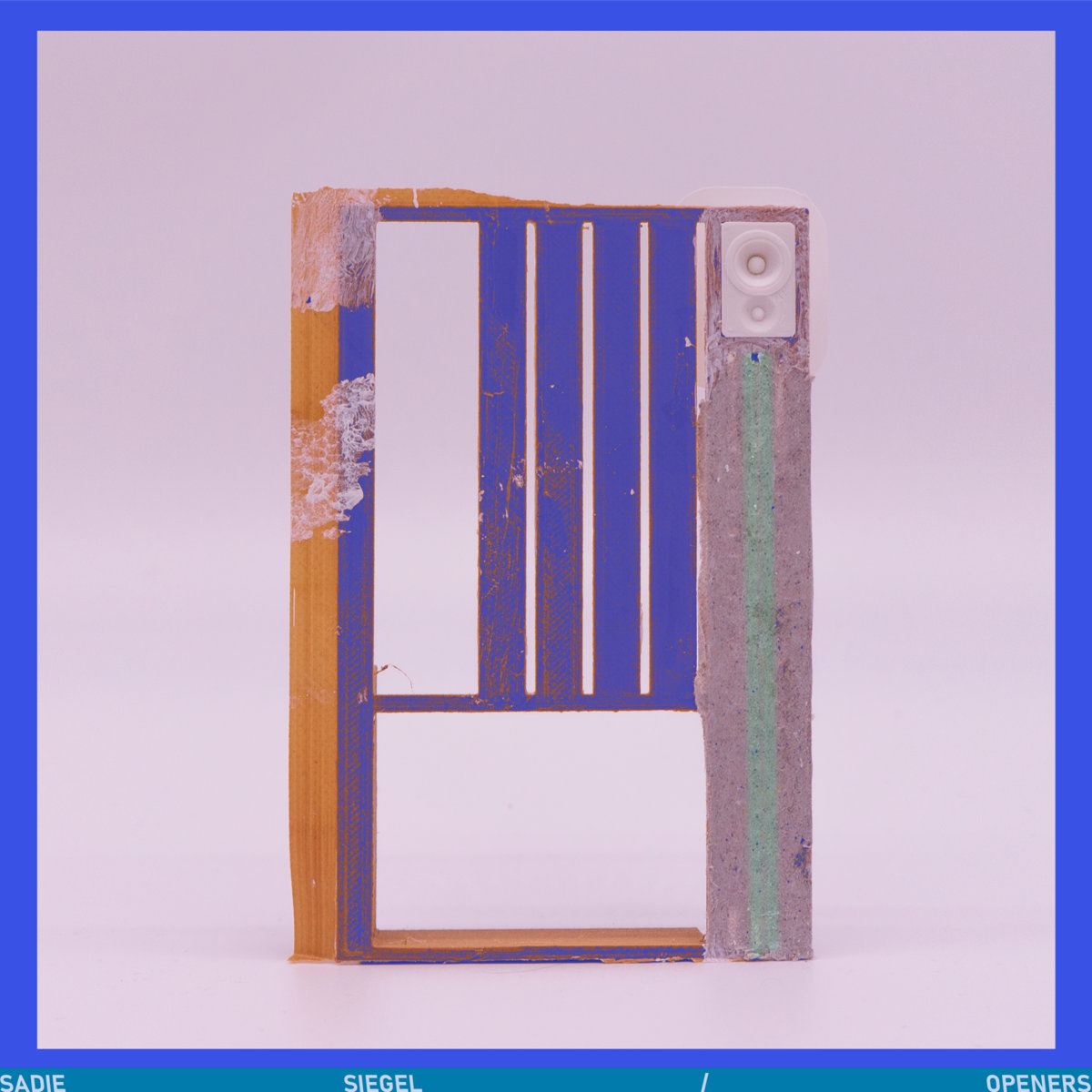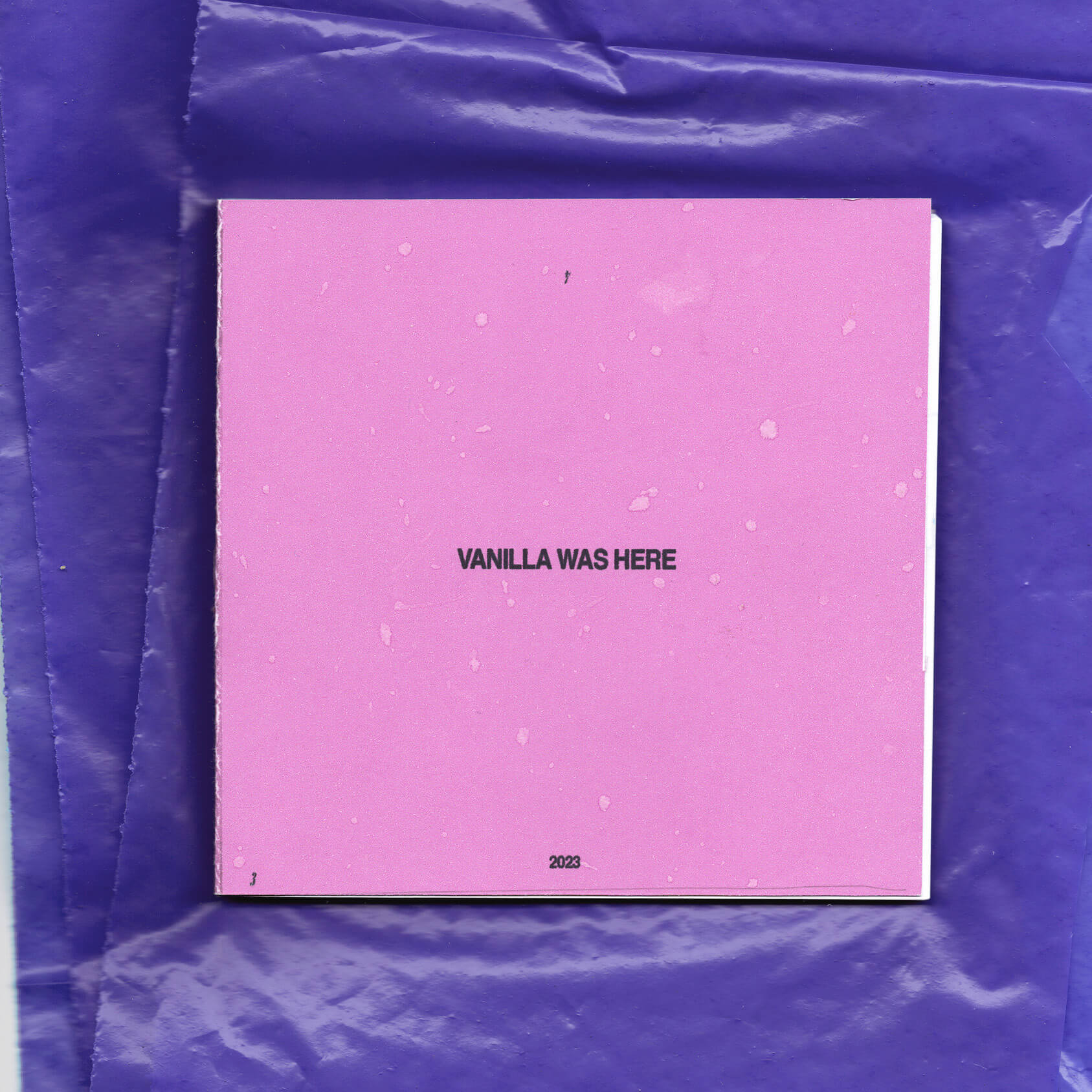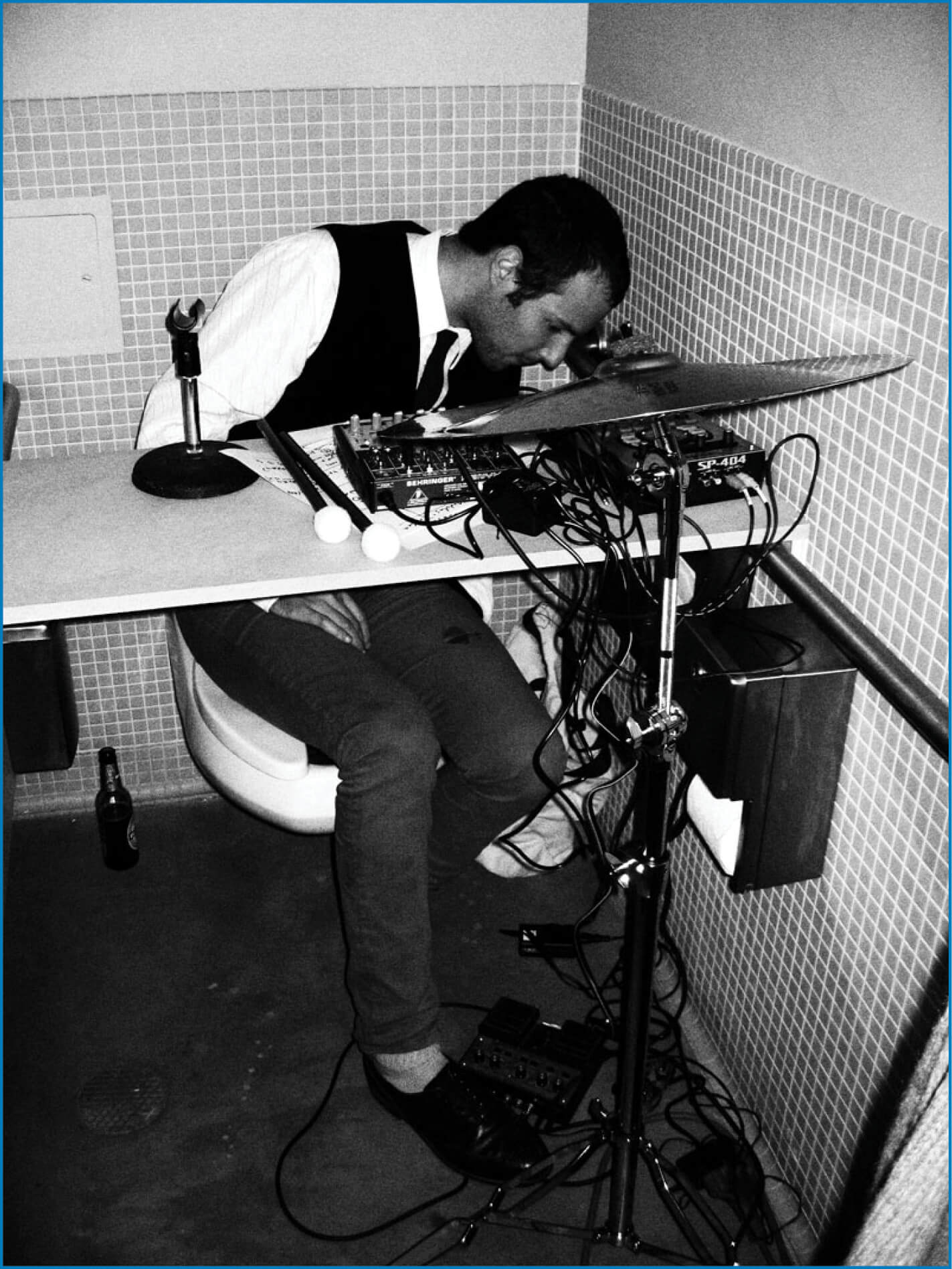>
Sadie Siegel
Since the early 2000s Sadie Siegel has been making music that defies categories. Named after his paternal great-grandmother, artist Seth Weiner chose Sadie as an alter ego to explore sound as an extension of touch, expression of space, and way to create impossible places. Working between exhibition contexts, discreet sculptures and the format of
albums, Siegel & Weiner draw from a history of site-specific art to create affect-specific situations. ------------------------------------------------------------------
In their early works, Siegel & Weiner recreated textures of traditional pop songs by dissecting lyrics and structures. Resembling psychedelic children’s music, they expressed potentialities hidden in anger, rage and joy paired with comfortable rhythms and melodies. Later, their interest shifted to serial structures and drones which they used to investigate the spatial conditions of sound. This led to songs sung into walls, spatial performances, and to exhibition scores. In their recent albums, Siegel and Weiner combine domestic field-recordings with peripheral techno-beats that meet psychedelic and repetitive post-song structures. -----------------Siegel & Weiner are good at tuning into places, drawing attention to spatial settings and their social implications. Sometimes their work wraps you like a blanket, sometimes it bounces off the surrounding architecture into your chest, and sometimes it just offers a quiet, ambient soundtrack, subtly highlighting the follies of a universe that we, the audience, are also eventually a part of.
-Claudia Slanar
Vanilla Was Here / 2023
Bildraum 01 / Vienna, AT
Soundtrack to the exhibition Vanilla Was Here that was written, recorded, and mixed on site.
→ vist project
Paper Songs (Ruff Mix) / 2022
Youngstown, OH / Vienna, AT
Sketchy sequence of tracks from a residency at Sun Sun Paper
→ vist project
Openers / 2021
Vienna, AT
{ Mixing and Mastering by Chris Janka
Featuring Manès Weiner-Slanar
Initially I wasn't happy with where the album was because it felt undecided. Somewhere between songs and spaces. I wanted to make a whole album of openers. Songs that open up and score whatever surroundings they're in, point to some looming drama offstage.
On Tue, Feb 1, 2022 at 1:39 AM <seth.weiner@yahoo.com> wrote to <Butters (Seth Lower)> :
Thanks Brs! sorry for the delay, been plugging away at a bunch of colliding deadlines which ended yesterday...hadn't heard Tindersticks before, really great...
So, "for my book work i'm often re-curating the same images into a few different curatorial groupings, sometimes being really strict about what goes in, like for example there is a mini series of objects on tree stumps and a mini series of objects in the gutter near the curb. these both exist within the larger framework (some in dandelion, some in an as-yet undefined project) but then there's one version that's just really literal and limited. curious if you do anything similar.."
Yeah, there's a bunch of false start playlists attached to this album. Most were abandoned in favor of this sequence because they were too confined or were too chaotic and undefined...Most of the tracks on Openers have a few sibling tracks/sketches that were started about the same day or week, share a palette and mood, are a kind of miniseries, etc. The ones that made it to the album just somehow outlasted the others or created the right kind of edges...It's weird, w making the selection it's often about repetition. I should at some point log my listening/noodling hours. Whatever makes the cut has probably been played most. I think that has something to do w the arch/spatial impulse. For them to be habitable. But then there's the question of how they fit into a sequence or break it. I definitely tried to make it so the local relationships between tracks was always about a kind of difference. Color, voice, texture, thickness, energy, etc...
Some tracks were really hard to find a place in sequence, and are really stubborn, others can move between albums and playlists and seem to always absorb or tint their neighboring tracks...some just always want to live at the top or bottom of the sequence, others change everything that comes after/ before.
Maybe this is where the vocal, non vocal contrast comes in, the block party v fetal position rockers. The voice seems to immediately push out the surroundings, locates subjectivity, narration, etc. The vocal ones are always a bit more stubborn. I guess it's actually pretty similar to figuration/abstraction in painting/imaging. Once there's a figure you look to them to help narrate the space of the image, help communicate and open empathy, if they aren't there you're stuck with google maps all on your own...
Most of the time I'm just sketching daily, and some of them kind of present a clear path into and out of their spaces. Sometimes their shapes are clear to me, and I hear opportunities to reenter into them and untie melodies or textures, understand the characters and their stories. How they might transform or be transformed by the environment the track establishes.
I found the sequence pretty early on, doubted it for quite a while then just committed to it. The boundaries/contrast between tracks felt right, or at least expressed something spatial enough to create room, gave me motivation to extend or deepen tracks...
I was working a little w this idea of how songs/music open and close your surroundings. How they score space. I initially wasn't happy with where the album was because it felt undecided. Somewhere between songs and spaces...I wanted to make a whole album of openers. Might try for closers at some point but probably am not melodic enough to pull it off...
In terms of pulling them out of sequence I'm open to it. I've been trying to make them work as 'singles', each being self contained but also liking company. Funny with the French Vibes (Prideday Subway), a friend is using it in a film piece but it's in Polish, I really like how they (Rafal Morusiewicz) used it in the piece and their work...so maybe it's got contemporary Polish vibes...probably need to write a little press blurb for this soon, would be great to hop on the phone w you before about it...
hope you and Wings are okay
lots of love
xoxo
s&s------
-Seth Weiner / Stuwerstrasse 9 / 7-8 Vienna, AT 1020 /
+43 699 18265528 / sethweiner.org
Zirkusgasse / 2022
Vienna, AT
Sketchy audio souvenirs from early 2022...moving towards something with less of a sad basement vibe...also still working on it.
Shopping Chant (Oeverwerk Installation) / 2020
Vienna/ Rösselmühle - Graz, AT
{ Stereo Prints from a 6-Channel Installation
Featuring Manès Weiner-Slanar
A room connecting two grain towers functioned like the body of an instrument, squeezing songs through the floors of a decommissioned flour mill in Graz.
For documentation see Shopping Chant --->
Both ends of the former packing room I worked in had ribbon windows that look out onto the Mühlgang canal. When the windows were open you could hear gates from a turbine drop into the water and collect power to sell to the city. For most of the show the electricity was from the turbine, but when the canal would run too quickly it would overwhelm it and shut off. I really liked the idea of sound only playing when the turbine ran.
The room I worked in was the last stop on guided tours of the mill. I didn't clean it up and liked the different layers of time that were visible. I wanted to score and pull them into focus. Narrativize them with electrical impulses. I only experienced the sound from high in the building a few times, mostly I was obsessed with how it balled up in the room. When I went outside it was more saturated, the mix would glue together and get caught in the wind. It felt more like an image. In the low-ceilinged room the speakers were in, the sounds were more localized, more like objects and bodies. They seemed to come into direct contact with the architecture and each other. Push at the walls, hug each other.
For the audio, I was interested in how songs could become sculptures, how repetitive figures and chanting oscillate between being meditative and menacing, spatial and cinematic. The songs I used were from an album I’d been working on (Chanting, upcoming release as Sadie Siegel) and were harmonically in tune with the turbine. The show was only open on the weekends and for each day I used a different song that functioned like a clock for the mill. Tours would start on the hour, mostly every hour.
Friday – Postcard Chant
Saturday – Shopping Chant
Sunday – Dog Day Chant
At one point, a curator asked me if I considered the piece to be a sculpture or a sound installation and then hesitated and asked if I was interested in those kinds of conversations. I said I was and that it's sculpture that uses sound as its material. She said she was surprised it was so melodic and asked me what I called this kind of music. I tried to be clever and said it was 'Sculptural Pop'.
For more info and text about the exhibition see Oeverwerk --->
Chanting / 2020
Vienna, AT
{ Mixing and Mastering by Chris Janka
Featuring Manès Weiner-Slanar
Recently I've been interested in how voice acts as a political mouthpiece. How it's attached to our bodies and is one of the most immediate tools we have for editing space. We bend it depending on context, assert it in the face of power. When someone yells at another person, the voice becomes a weapon.
When someone whispers, they soothe. Voice is an extension of touch that can project beyond the body’s skin, travel through walls, around doors, and fill up whatever container it's given.
Throughout most of 2020, I was working with my recorded voice, listening to how it connects to, questions and extends the limits of a space. Built around repetitive figures and chanting, the tracks from the album oscillate between being meditative and menacing, sculptural and cinematic. Sound and singing have always made sense for me as a release, a direct way to express frustration, discontent, love and sorrow. A way to try and be present in those feelings. In the isolation of the pandemic, music served as a kind of mobile architecture for me that could be shared at a distance, unfold and extend a space on demand. The album feels a little bit like a diary for me, some notes and spaces to remember the confusion and sadness of the first year of COVID with.
Purple / 2019
Vienna, AT
} After a longer break from focusing on music than I would've liked, I chased after pop structures which alternate between static melodic figures that listeners move through and more linear melodic figures that move by the listener.
At the time, I'd been listening to a lot of mixes and wanted to echo the form by approaching each track as its own space, using difference to create coherence. The tracks range from poppy attempts to pastoral perversions, from grainy lullabies to domestic interludes. The album sits at a cross section for me, beats model time horizontally, while the textural and spatial tracks approach time as something vertical that happens all at once...
I'm mildly embarrassed by the pop tunes on it but it's probably because they don't seem to leave much room for the listener. They seem too figurative, too blocky and clear in their geometry...
For a conversation with Mark “Frosty” McNeill about ‘Purple’ visit Dublab's Celsius Drop --->
Plain Bob Minor / 2016
Vienna, AT
{ Winter music, synthesized piano programmed with a drum machine. A suite of tracks built using a permutation set from Change Ringing called Plain Bob Minor (British sport of algorithmic church and hand bell ringing).
Change Ringing has a very devoted culture of enthusiasts (professionals, really) that compete over duration and unique sequences. Plaques are set into the stone of churches after exceptionally long and accurate performances. It's even called a "foul" when a number skips too far or there’s a repeat. The bell ringing process seems like it could be an early template for algorithmic / minimalist music (1700's). Funny that such a rational, mathematical system was flooding the streets of countless cities as a signal of the Church...
I love how Change Ringing has a spatial and social diagram embedded in its performance. How the decay of bells wrap around themselves, their attacks travelling to the edges of architecture and maybe even the limits of a city. How bell towers now sit weirdly in most post-Roman villages as a lost symbol, a keeper of time, emergency signal, distributor of musical ideas.
I watched and listened to this on repeat for a good six months…
amazing 24 handbell performance done for a captive audience --->
They Live in Different Valleys / 2011
Los Angeles, CA
{ Featuring Claudia Slanar
From: seth weiner <bunnyhole2000@yahoo.com>
To: "seth.weiner@yahoo.com" <seth.weiner@yahoo.com>
Sent: Tuesday, June 28, 2011, 03:28:49 AM GMT+2
Subject: TEMPLATE: New Sadie Siegel children's noise musical
Dear ;;;;;;,
Below is a link to a project I recently finished titled "They Live in Different Valleys". I've tried training my voice to mimic various instruments so I can work without too much use of my hands but it ends up just sounding like a bar-mitzvah aged boy stuck in a well, layered 60 times. I make Claus listen to almost everything I do. She's like a personal curator for me, she'll say "No, not so interesting. Shaz" or dance and tell me it's a children's noise musical. I really want there to be ambiguity as to the gender of the project (Sadie Siegel) the lyrical content and vocal range. Sometimes I won't look at the computer screen when I work or I'll go to a place that makes it impossible for me to hear what I'm doing and work in the living room to avoid feeling like another bedroom blog cliche. Mostly I just make smoothies and sit in a chair though.
track: """"
album: ''''''bandcamp link
la record review
booklet pdf ---->
Hope you enjoy the spaces,
best,
Sadie
Seth Marshall Weiner 120 South Vignes # 301
Los Angeles, CA 90012
untitled collective / practicing a broken ceiling / sadie siegel
Karaoke Tests / 2010
Los Angeles, CA
{ A loose collection of tracks, Karaoke Tests spans a range of ideas for me. Some of them I’m still chasing after, some I’ve abandoned in my old age.
*SADIE / 2009
Los Angeles, CA
{ This was my first attempt at sequencing an album with singing and the first Sadie Siegel release. I was looking for pop songs that would fall apart into textures and maybe come back into melodies. I think I found psychedelic children’s music instead…
Listening back I’m surprised at how impatient I was. How quickly I jumped between spaces. When I wrote it I was still in architecture school and had just met my partner Claus. I would send her tracks in hopes of impressing her. Apparently it worked because we’re still together…



